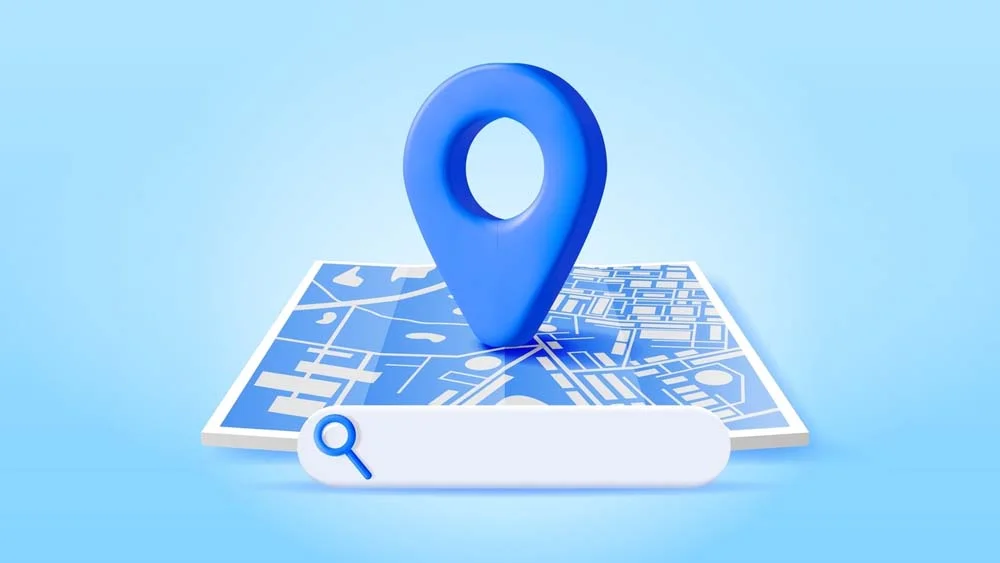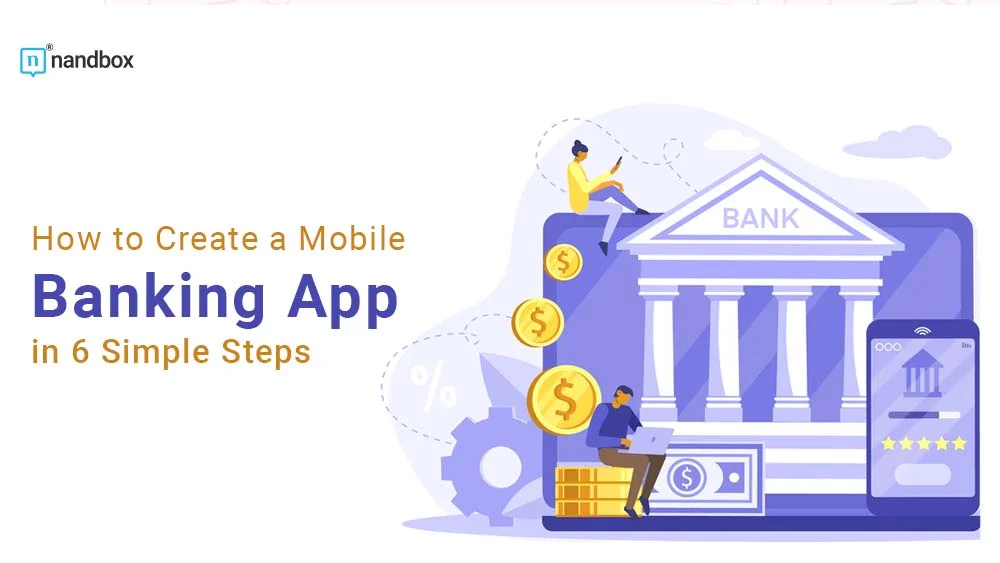The Improvement of Banking Processes Through Apps
Many aspects of our lives have completely transformed due to all the technological progress and the wave of digitalization. It is really something we can control; it is all happening at a fast pace, and we need to catch up and adapt at the same pace. The massive digitalization era of the banking and financial industry has changed dramatically and caught everyone off guard. The change witnessed by all people, individuals, and even employees in the banking and financial sector is momentous and almost unbelievable. This article will show you how e-banking works and how it has brought about a dramatic shift in the way people live their lives. We will also give some tips and tricks on how to create a mobile banking app
What is E-banking
Starting off with a simple and pretty logical question: what is e-banking? Electronic banking, online banking, or "E-banking,” as it is more commonly known, is the system where clients of a certain bank can conduct all bank services and transactions electronically using the bank’s servers established on the internet. Once upon a time, a trip to the bank was necessary for such services or transactions. The trip, let us be honest, was not a pleasant one.
However, the past stays in the past. Almost every bank now has established apps and online database servers in order to facilitate all transactions for clients and adapt to this advancement. Now, through their bank app, clients can take various actions and perform many activities with only one click. Some of the common activities that can be performed through e-banking include checking account balances and transaction histories, transferring funds between accounts, paying bills online, etc. Just name a service, and you’ve got it.
History of E-banking
Now that we’ve got a glimpse of what e-banking is, how did it even start? You’d be surprised to learn that the concept of e-banking dates back to the mid-70s, and the actual trial started in the mid-80s by a few banks. However, the idea of digitalization wasn't as developed as it is now.
Establishing such technology required a lot of effort and money, and people weren't familiar with the concept of the internet and doing things electronically. By the 1990s, both the internet and the idea of online banking were becoming more common and widespread. E-banking has grown larger, more sophisticated, and more widely adopted throughout the years, reaching its peak over the past decade. Of course, we can’t fathom that this is the apex, especially because technology continues to astound us daily. Statistically, 80% of bank clients prefer e-banking to physically going to the bank. This is hardly surprising considering that, globally, approximately 73% of clients currently use online banking.
How Did E-banking Improve the Banking Experience and Process Through Apps
Convenience and Accessibility
First comes one of the greatest benefits of e-banking, which is convenience and accessibility. As previously stated, e-banking was developed to help clients obtain and benefit from services while saving time and effort. This is how e-banking apps accomplished this:
-
24/7 Availability
Unlike physical banks, Online banking apps are available all day, every day. If a client wants to receive, send, or deposit money anytime outside working hours, he would be capable of doing it instantly.
-
No Physical Location Limitations
Some clients live miles and miles away from bank branches, and it would take a very long time to be there, and even a longer time to get to make a transaction or receive assistance. E-banking came to demolish such limitations and enable all clients to access their bank accounts and receive all the services they want without exerting much effort and going the distance.
Increased Efficiency
Another advantage of e-banking is its efficiency. Unlike physical banks, e-banking apps proved to be much more efficient. Financial institutions have claimed that their mobile banking apps have greatly increased customer satisfaction to an unexpected extent. The two following factors were the main reasons why:
-
Faster Transactions
E-banking apps eliminated the idea of waiting in lines for hours to make a single, maybe even easy transaction. With these apps, you can now make any transaction with one click, literally. It is not necessary to deal with the long queues hassles.
-
Reduced Costs
In addition to all that, E-banking apps help reduce such major costs for banking and financial institution. The automation of some banking processes made it possible for banks to save the costs of manual labor for much bigger and more complex processes.
-
Improve Sustainability
Bet you didn’t see that coming. In a significant way, Mobile banking apps contribute to environmental conservation and sustainability. As it reduces the need to physically visit banks, this way reducing carbon emissions as a result of this change. Also, the automation of all processes helps in saving many resources such as paper. Paper was the standard for all their transactions and services previously. However, it is one of the main reasons for pollution and environmental damage.
Enhanced Customer Experience

Another thing that mobile banking apps improved is the customer experience. These apps were able to provide a whole new and enhanced customer experience that was different from the traditional one.
- Improved Communication
Mobile banking apps have revolutionized the way clients and employees communicate with each other. The ease and convenience offered by these apps have made them the preferred method for conducting financial transactions. With mobile banking apps, clients can now manage their accounts without the assistance of an employee. Moreover, the apps provide step-by-step instructions and comprehensive guides to help clients navigate through the various features and services. This enhances their understanding and makes them more confident in their financial decisions. As a result, the communication between the employee and client is based on a better understanding, leading to a more seamless and efficient experience for both parties.
-
Access to Information
E-banking apps also made it easier to learn everything about accounts, not only for clients but for employees as well. For clients, apps make it seamless and quick for them to view and manage everything on their accounts. For instance, view their transaction history and generate financial statements if needed such as cash flow or income statements. As for employees, as databases are now present on the internet, they can access clients faster without the need to go through millions of papers and data to find one specific client. This allows employees to provide better and more convenient assistance.
Improved Security Measures

The most important area that mobile banking apps were able to improve is security. Technology advancement offered many ways to improve clients’ security through apps:
-
Encryption
It's reasonable to worry that the fact that databases containing sensitive information are online poses a security concern. However, encryption came to assure you. Encryption of data is a technology used by many including the banking sector as it provides the maximum level of security. The process of encryption protects the two-way information transition by converting the written and understandable text into some inexplicable text. This text cannot be encrypted by anyone but the other part which in this case is the bank server. This way upon submitting any transaction with the app, clients don’t need to worry that their info might get compromised in any way.
-
Two-Factor Authentication
In addition to providing security from the bank’s side. Mobile banking apps enable clients to also secure their information from their side as well. Two-factor authentication is a must in e-banking apps. Clients get to set up a secure and protected way to prove their identity before each transaction. They can do so by a phone number, pin code, password, or even a physical key. This eliminates any chance of fraud or identity theft and helps make the clients’ data ultimately safe.
Create a Mobile Banking App
Now that we've dug deep into the numerous effects and enhancements mobile banking apps have had on banking processes and the customer experience. We can conclude how significant it is to employ technology, especially apps, in our lives and how it is such a privilege to have them. So, in this section, we will go through how to create a mobile banking app with nandbox and the best features you can add to enhance the client experience.
1.) Focus on the User Interface and User Experience (UI/UX)
First things first is the user interface. The user interface acts as the first line of defense when it comes to apps. It's the first point of contact with the app, and it sets the tone for the user's experience. It is everything concerning the look of the app and visuals (basically, the artistic part). Since the user interface is a reflection of one of the most prominent industries, it is crucial that it be neat, well-presented, and professional. In terms of color and design, it should also express something about the institution it was created for to improve brand recognition.
The user experience includes the app functionality and how the client would interact with the client. As the main goal of e-banking is to facilitate the process as much as it can get, the app should [provide clients with the utmost experience. They should be able to navigate through the app seamlessly without running into any problems. The app’s features should be as clear as possible to avoid any customer frustration as well.
2.) Features to include
I.) Login and registration
As we mentioned above, the best feature that you could offer for clients is a secure and strong login and registration. Clients should be able to log in and register using multiple methods and not be limited to only one. The process should also be secured and clients should be assured that their information is safe. The nandbox app builder offers an easy and secure login and regeneration feature with multiple methods to choose from and configure, making it ideal for app developers.
II.) QR Scanner
One feature that could take your app to the next level is the integration of a QR scanner. This feature has the potential to revolutionize the way your clients pay for goods, services, and bills by allowing them to make payments without having to use their cards. The convenience and ease of use of this feature would make it a great solution for people who want to pay for anything anywhere and at any time. The QR scanner would also add a layer of security to your app. With the increasing chance of credit card fraud and identity theft, many people are hesitant to share their credit card details. However, with the QR scanner, your clients can make payments without sharing their credit card details with anyone. This will give them the peace of mind they need to make payments online, knowing that their financial information is secure.
III.) Map Search

The map search is another great addition that you should consider when you create a mobile banking app. With this feature, you could easily highlight all the bank branches so clients could easily find them on the map. In addition, you could also add all the ATMs locations to further enhance the customer experience. As of now, clients won’t spend much time looking for an ATM; they will just go to the application and find the nearest one.
IV.) Workflow
Always save the best for last. The workflow is one of the most prominent features that nandbox offers. In addition to being essential, it also contributes to improving the customer experience. The workflow allows the developers to configure and integrate a backend system and database server into the application. This is necessary, especially for a mobile banking app. As it is all based on transactions that would require seamless configuration between the back end, which includes the database servers. Also configuration with the front-end systems that connect directly to clients. With this feature, you can extend the range of available services and transactions to clients while guaranteeing complete safety and ease of transaction.
In Summary
E-banking has brought about numerous improvements to the banking experience and processes, including increased convenience and accessibility, increased efficiency, an enhanced customer experience, and improved security measures. For those looking to create a mobile banking app, it is important to focus on the user interface and user experience and consider including features such as login and registration, a QR scanner, map search, and workflow integration. With the help of these features and a strong focus on client needs, mobile banking apps can greatly enhance the banking experience for customers. Now that you know all of these features and more are available at the nandbox app builder, you can create a mobile banking app in minutes and provide clients with the best customer experience possible.
